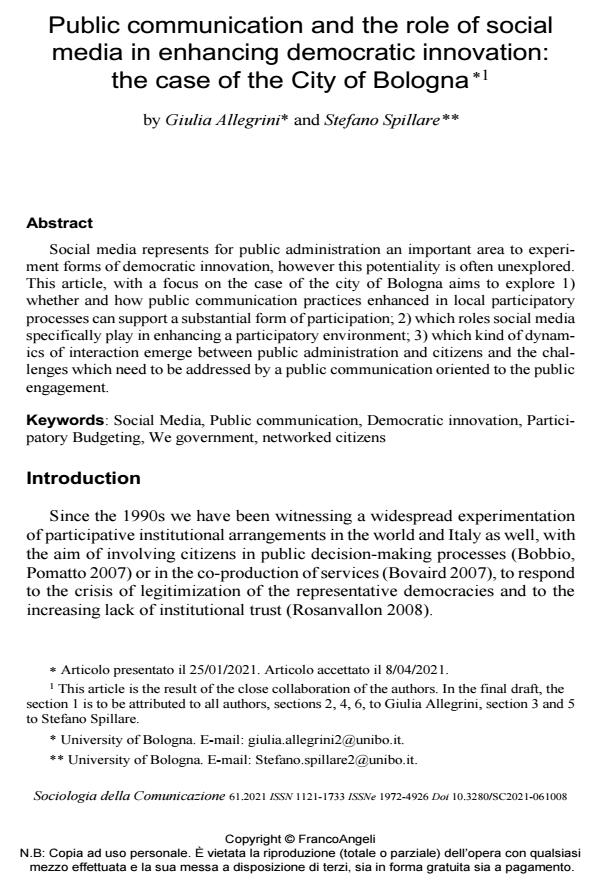Public communication and the role of social media in enhancing democratic innovation: the case of the City of Bologna
Journal title SOCIOLOGIA DELLA COMUNICAZIONE
Author/s Giulia Allegrini, Stefano Spillare
Publishing Year 2021 Issue 2021/61
Language English Pages 18 P. 109-126 File size 419 KB
DOI 10.3280/SC2021-061008
DOI is like a bar code for intellectual property: to have more infomation
click here
Below, you can see the article first page
If you want to buy this article in PDF format, you can do it, following the instructions to buy download credits

FrancoAngeli is member of Publishers International Linking Association, Inc (PILA), a not-for-profit association which run the CrossRef service enabling links to and from online scholarly content.
Social media represents for public administration an important area to experi-ment forms of democratic innovation, however this potentiality is often unex-plored. This article, with a focus on the case of the city of Bologna aims to explore 1) whether and how public communication practices enhanced in local participa-tory processes can support a substantial form of participation; 2) which roles so-cial media specifically play in enhancing a participatory environment; 3) which kind of dynamics of interaction emerge between public administration and citizens and the challenges which need to be addressed by a public communication orient-ed to the public engagement.
Keywords: Social Media, Public communication, Democratic innovation, Partici-patory Budgeting, We government, networked citizens
Giulia Allegrini, Stefano Spillare, Public communication and the role of social media in enhancing democratic innovation: the case of the City of Bologna in "SOCIOLOGIA DELLA COMUNICAZIONE " 61/2021, pp 109-126, DOI: 10.3280/SC2021-061008